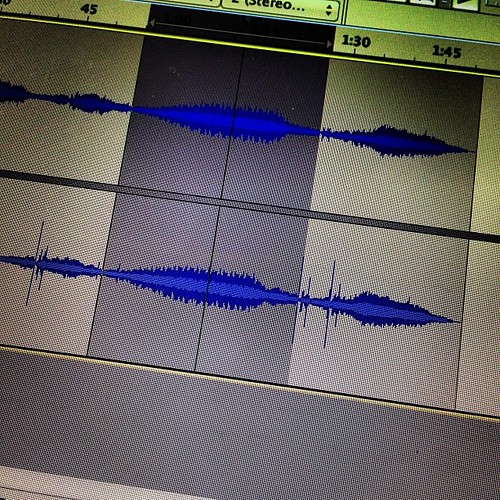Last night at an event at the Lighthouse in Brighton, Cathal Coughlan and I unveiled publicly for the first time a piece of work we have been collaborating on called Palindrone. We installed, for the evening, v1.0 of the work in the conference room at the Lighthouse venue.
Palindrone is a work that was conceived during my residency at the Lighthouse Studio programme. Whilst at the studio I started playing around with some of the Buddha Machines that I have and started a discussion with Natalie and Honor about drones. The two started to come together quite quickly, initially with an idea to create a circle of sound objects, like the Buddha Machines, each playing different samples to create a soundscape. The idea became simplified to create a background drone and using code, monitors the reports on drone strikes that the Bureau of Investigative Journalism maintains. If a new report is added to the database (which gets reflected by the twitter feed @dronestream, which is run by artist Josh Begley) it triggers an interrupt sound over the background drone.
Whilst playing with the Buddha Machines I remembered a story I had read earlier in the year about the psychological effect the drones were having, specifically on the children. They would not sleep, afraid of the drone in the distance. The drone was a terrorising object, above communities it installed a state of control where activity had to be curtailed, self censored for fear that it might ‘attract the attention of a drone’.
I found a press release from Reprieve, about the psychological effect the drones were having and this was presented along with the piece at the installation.
This is the panopticon, the idea that a central body of control might be observing your activity, so you modify your behavior in case it is watching. The drone though imposes American/British/Western military control over communities in Yemen, Pakistan, Somalia and Afghanistan.
Installed, the piece is a sound in a room, at Lighthouse the conference room had subdued lighting and on a table we had some texts that I have been investigating whilst developing the work.
The main sample loop has been constructed by Cathal, we have currently sourced a number of drone samples from the internet and laid these together to create the main loop, the interrupt sound is again a sample based on the sound from a military encrypted message.
Version 1.0 is still a work in progress, we are developing how the sound should be constructed, how much detail and noise we want in that main sound and clearing the use of samples as well as investigating the possibility of capturing our own samples to use in the piece.
The work is an artistic response to a situation that has come to our attention, from investigating this further and in constructing the work we are also highlighting possible responses from a design perspective.
We will document the evolution of the piece here, as well as notify of any installations. If you have any questions on the piece then please get in touch.

